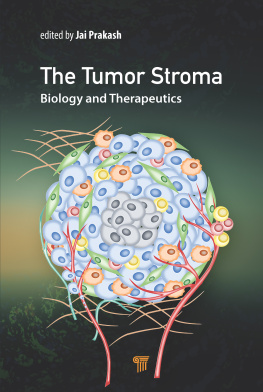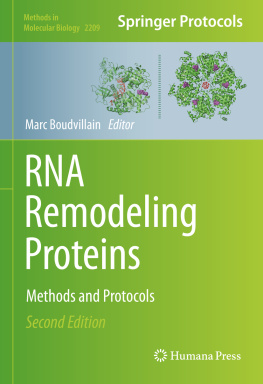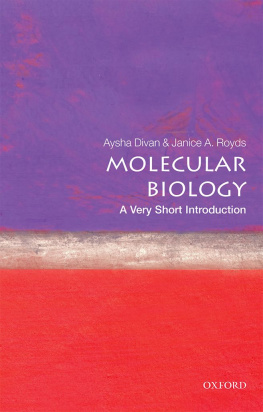Marc Laurence Mendillo - HSF1 and Molecular Chaperones in Biology and Cancer
Here you can read online Marc Laurence Mendillo - HSF1 and Molecular Chaperones in Biology and Cancer full text of the book (entire story) in english for free. Download pdf and epub, get meaning, cover and reviews about this ebook. year: 2020, publisher: Springer International Publishing, genre: Romance novel. Description of the work, (preface) as well as reviews are available. Best literature library LitArk.com created for fans of good reading and offers a wide selection of genres:
Romance novel
Science fiction
Adventure
Detective
Science
History
Home and family
Prose
Art
Politics
Computer
Non-fiction
Religion
Business
Children
Humor
Choose a favorite category and find really read worthwhile books. Enjoy immersion in the world of imagination, feel the emotions of the characters or learn something new for yourself, make an fascinating discovery.
- Book:HSF1 and Molecular Chaperones in Biology and Cancer
- Author:
- Publisher:Springer International Publishing
- Genre:
- Year:2020
- Rating:3 / 5
- Favourites:Add to favourites
- Your mark:
- 60
- 1
- 2
- 3
- 4
- 5
HSF1 and Molecular Chaperones in Biology and Cancer: summary, description and annotation
We offer to read an annotation, description, summary or preface (depends on what the author of the book "HSF1 and Molecular Chaperones in Biology and Cancer" wrote himself). If you haven't found the necessary information about the book — write in the comments, we will try to find it.
HSF1 and Molecular Chaperones in Biology and Cancer — read online for free the complete book (whole text) full work
Below is the text of the book, divided by pages. System saving the place of the last page read, allows you to conveniently read the book "HSF1 and Molecular Chaperones in Biology and Cancer" online for free, without having to search again every time where you left off. Put a bookmark, and you can go to the page where you finished reading at any time.
Font size:
Interval:
Bookmark:

Advances in Experimental Medicine and Biologyprovides a platform for scientific contributions in the main disciplines of the biomedicine and the life sciences. This series publishes thematic volumes on contemporary research in the areas of microbiology, immunology, neurosciences, biochemistry, biomedical engineering, genetics, physiology, and cancer research. Covering emerging topics and techniques in basic and clinical science, it brings together clinicians and researchers from various fields.
Advances in Experimental Medicine and Biologyhas been publishing exceptional works in the field for over 40 years, and is indexed in SCOPUS, Medline (PubMed), Journal Citation Reports/Science Edition, Science Citation Index Expanded (SciSearch, Web of Science), EMBASE, BIOSIS, Reaxys, EMBiology, the Chemical Abstracts Service (CAS), and Pathway Studio.
2018 Impact Factor: 2.126.
More information about this series at http://www.springer.com/series/5584

This Springer imprint is published by the registered company Springer Nature Switzerland AG
The registered company address is: Gewerbestrasse 11, 6330 Cham, Switzerland
Proteostasis, or protein homeostasis, is a fundamental requirement for fitness in cells across all kingdoms of life. The proteostasis network encompasses pathways that synthesize, fold, and degrade cellular proteins. Deregulation of these pathways has devastating consequences to organismal health, leading to a range of pathological conditions including developmental defects, neurodegenerative diseases, and cancer. The compendium of chapters in this book focuses on the structure, function, and therapeutic implications of the proteostasis machinery in cancer.
We have been fortunate to receive contributions from an extraordinary group of basic, clinician, and translational scientists with a range of research approaches and expertise that include biochemistry, molecular biology, genetics, structural biology, and chemical biology. Underscoring the deep conservation and critical importance of this field of study, these researchers employ model systems from yeast to human to interrogate the underlying mechanisms and functional significance of the proteostasis network in health and disease. While a diverse group, these scientists are unified by a passion and belief that understanding the mechanistic basis by which proteins the molecular machines of the cell are able to fold and function properly is critical to understanding nearly all aspects of tumorigenesis. The chapters in this book reflect this fundamental tenet and cover the structural and biochemical properties of the major chaperone systems in the cell, how these chaperone systems function to impact cancer cells and the tumor microenvironment, and the promise of targeting these systems as an anticancer therapeutic strategy.
We chose to take this initiative to celebrate and commemorate the work of our beloved late mentor, Susan Lee Lindquist, a pioneer of proteostasis. Susan started her work on heat-shock proteins in the 1970s as a PhD student in the lab of Matthew Meselson at Harvard University. After completion of her PhD in 1976 and a brief postdoctoral fellowship at the University of Chicago, she joined the faculty at the University of Chicago where she embarked her independent research on protein synthesis and folding before moving to the Whitehead Institute for Biomedical Research at MIT. Switching to new model organisms as the biological questions required, Susan electrified the field time and time again using cutting-edge methods and incisive experiments to reveal new concepts that laid the foundation of what would later become known as proteostasis.
Her work on heat-shock proteins, prions, and amyloids in model organisms led her to realize that the interface between protein homeostasis and environmental stress might be involved in the evolution of new traits. This insight crystalized into the paradigm-shifting concept of Hsp90 as a capacitor of evolution. A decade later, she showed that similar protein-based evolutionary mechanisms fuel the malignant progression and therapeutic resistance of cancers.
Sadly, Susan succumbed to the disease she had been studying. On 27 October 2016, she died of ovarian cancer at the age of 67. The scientific community lost a hero that day. A scientific pioneer, role model, and advocate for women in STEM, Susans impact lies not only in her discoveries but also in her contributions to the culture of science. Her mentorship, the collegial environment she fostered, her curiosity, and her scientific enthusiasm made her into the iconic scientist she was and whom we dearly miss.
This book is dedicated to you, Sue.
Font size:
Interval:
Bookmark:
Similar books «HSF1 and Molecular Chaperones in Biology and Cancer»
Look at similar books to HSF1 and Molecular Chaperones in Biology and Cancer. We have selected literature similar in name and meaning in the hope of providing readers with more options to find new, interesting, not yet read works.
Discussion, reviews of the book HSF1 and Molecular Chaperones in Biology and Cancer and just readers' own opinions. Leave your comments, write what you think about the work, its meaning or the main characters. Specify what exactly you liked and what you didn't like, and why you think so.









